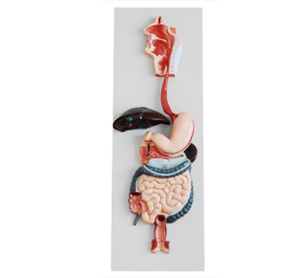

Article tag: Digestive System Model| BIX-A1055| Human Organ model|
Although the traditional digestive system model still occupies an important position in the field of medical education and popular science, with the continuous development of medical technology, the modern digestive system model has been able to simulate the digestive process of the human body more accurately and dynamically. These models can not only mee...
As an important tool in medical education, the accuracy of digestive system model directly affects students' understanding and mastery of human digestive process. With the advancement of medical technology and the increasing demand for medical education, whether the traditional digestive system model can meet the requirements of modern medical education has become a question worthy of discussion.
1. Impact of medical technology
With the rapid development of medical technology, the accuracy and interactivity of digestive system models have been greatly improved. These technologies make the traditional static model more dynamic and interactive, able to simulate various processes of the digestive system, such as food swallowing, digestion, absorption and other physiological phenomena. Therefore, modern digestive system models can not only provide basic anatomical information, but also simulate complex physiological changes, allowing students to operate in a virtual environment and experience real physiological responses.

2. The role of popular science education
In medical science education, digestive system model has high educational value. Through easy-to-understand visual representations, the digestive system model helps the public understand the complex digestive processes in the human body. For example, schools, museums, and health education centers often use these models to educate the public about digestive health and related diseases. As the public demand for health knowledge increases, the accuracy and level of detail of the digestive system model has become the key to the effectiveness of popular science education.
3. Data support
The data show that using modern models of the digestive system can improve the depth of understanding and clinical application of medical students. For example, virtual reality models can visualize various aspects of the digestive system, allowing students to participate in simulation experiments "in person." In one study of medical students, those who participated in VR digestive system learning scored more than 15 percent better on exams than those who were taught traditionally. In addition, the data also show that courses combining digestive system models with digital technology can significantly enhance students' grasp of disease diagnosis and treatment methods.
4. Conclusion
Although the traditional digestive system model still occupies an important position in the field of medical education and popular science, with the continuous development of medical technology, the modern digestive system model has been able to simulate the digestive process of the human body more accurately and dynamically. These models can not only meet the needs of medical education, but also play an important role in popular science education. In the future, with the continuous innovation of technology, the digestive system model will be more accurate and efficient, and become an indispensable tool in medical education and public health education.